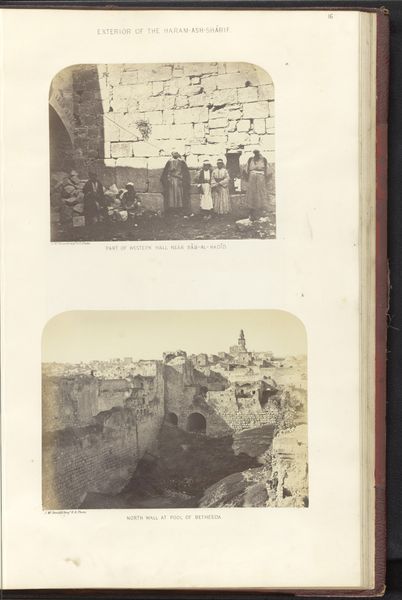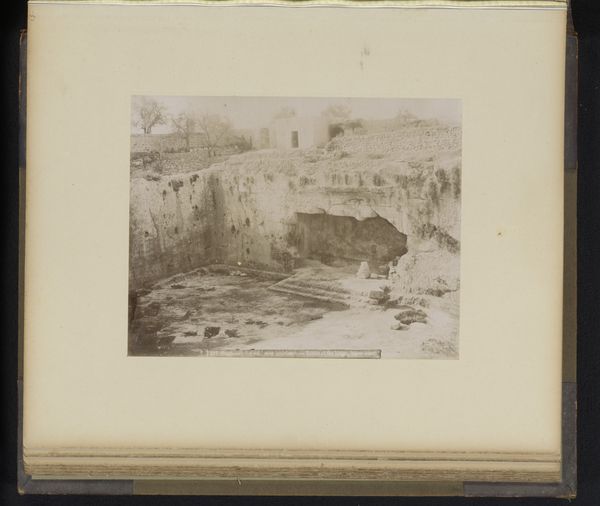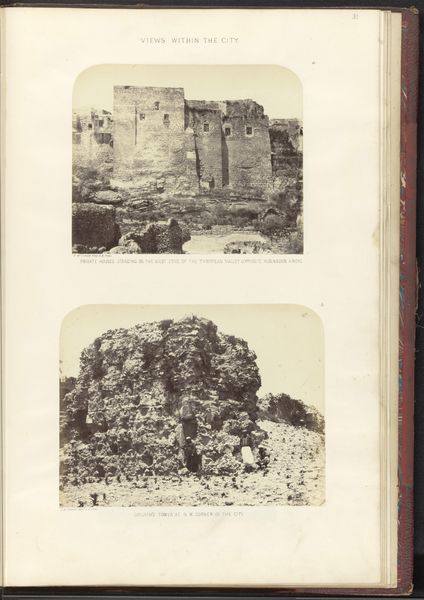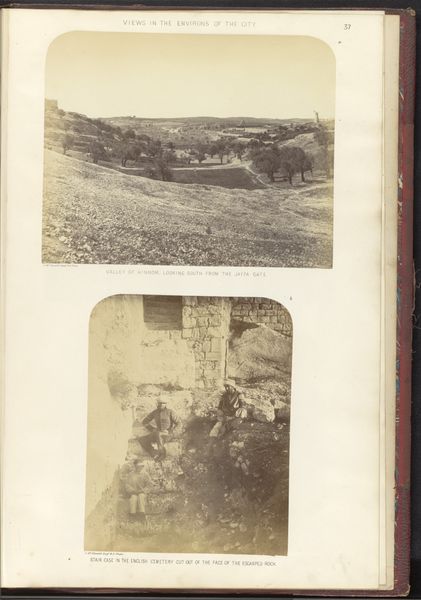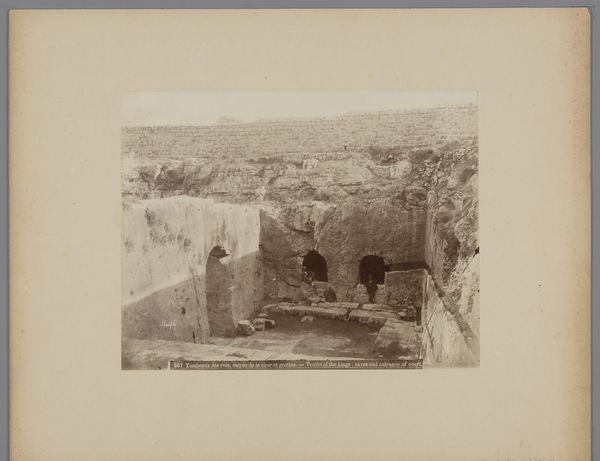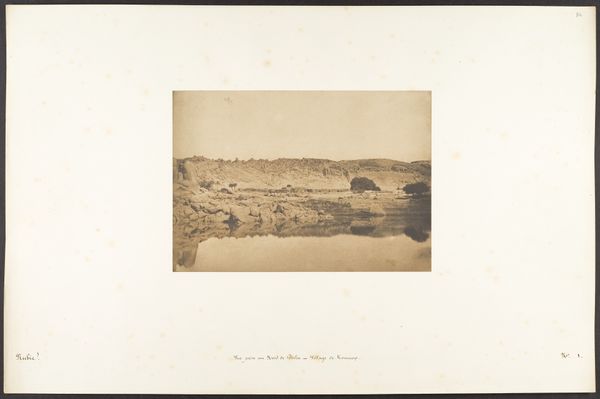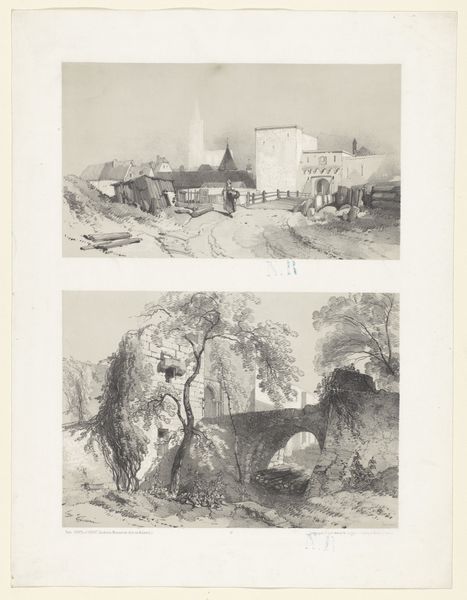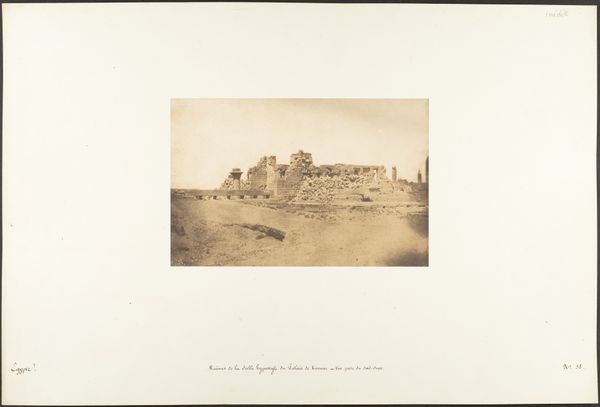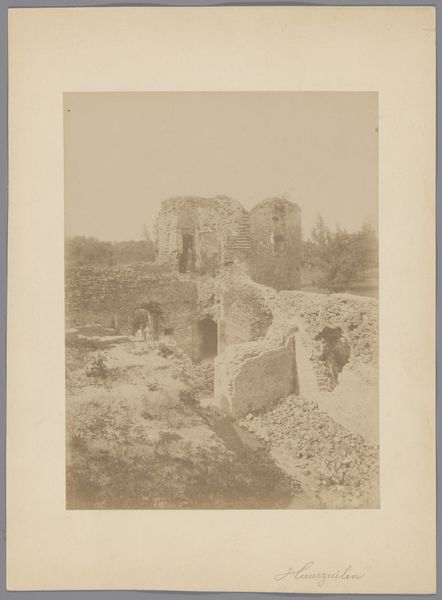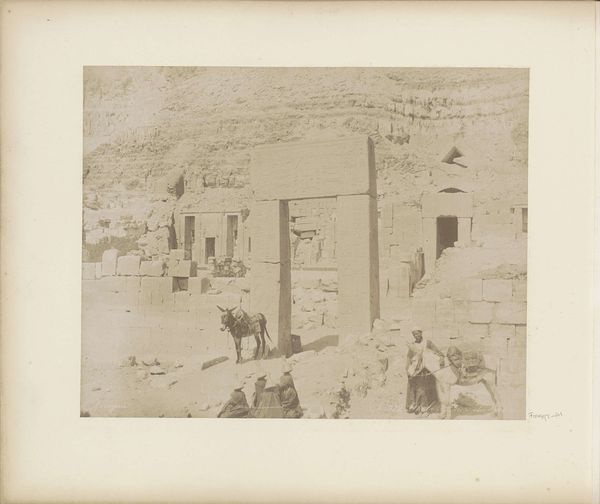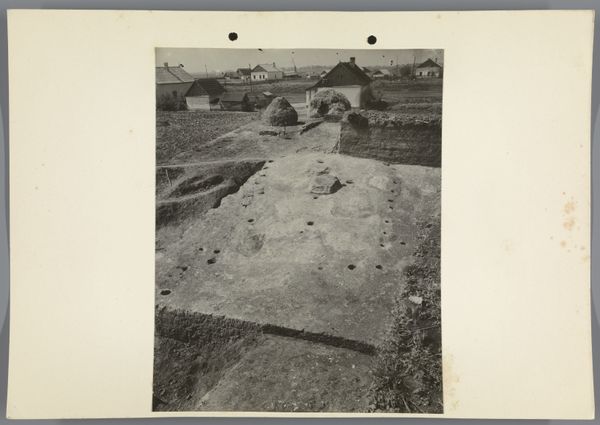
Gezicht op graven in het Kidrondal en een gezicht op de ingang van de graven der koningen, in Jeruzalem before 1865
0:00
0:00
print, photography, albumen-print
# print
#
landscape
#
photography
#
coloured pencil
#
ancient-mediterranean
#
orientalism
#
cityscape
#
albumen-print
Dimensions: height 523 mm, width 340 mm
Copyright: Rijks Museum: Open Domain
This photograph of tombs in Jerusalem was created by James McDonald, sometime in the 19th century, using a process that was still relatively new at the time. The sepia tones and sharp details speak to the materials and techniques involved: a glass plate negative, coated with light-sensitive chemicals, exposed in a camera obscura, and then developed to create this lasting image. Photography democratized image-making, rendering the skills of painting and drawing less socially exclusive. Yet, at the same time, it demanded a mastery of chemistry and optics. Consider, too, the social context. McDonald was not just making art. He was also participating in a scientific culture, dedicated to documenting the world and making it visible. So, when you look at this photograph, think about the intersections of art, science, labor, and social change that it represents. It challenges us to consider the value and purpose of image-making itself.
Comments
No comments
Be the first to comment and join the conversation on the ultimate creative platform.
